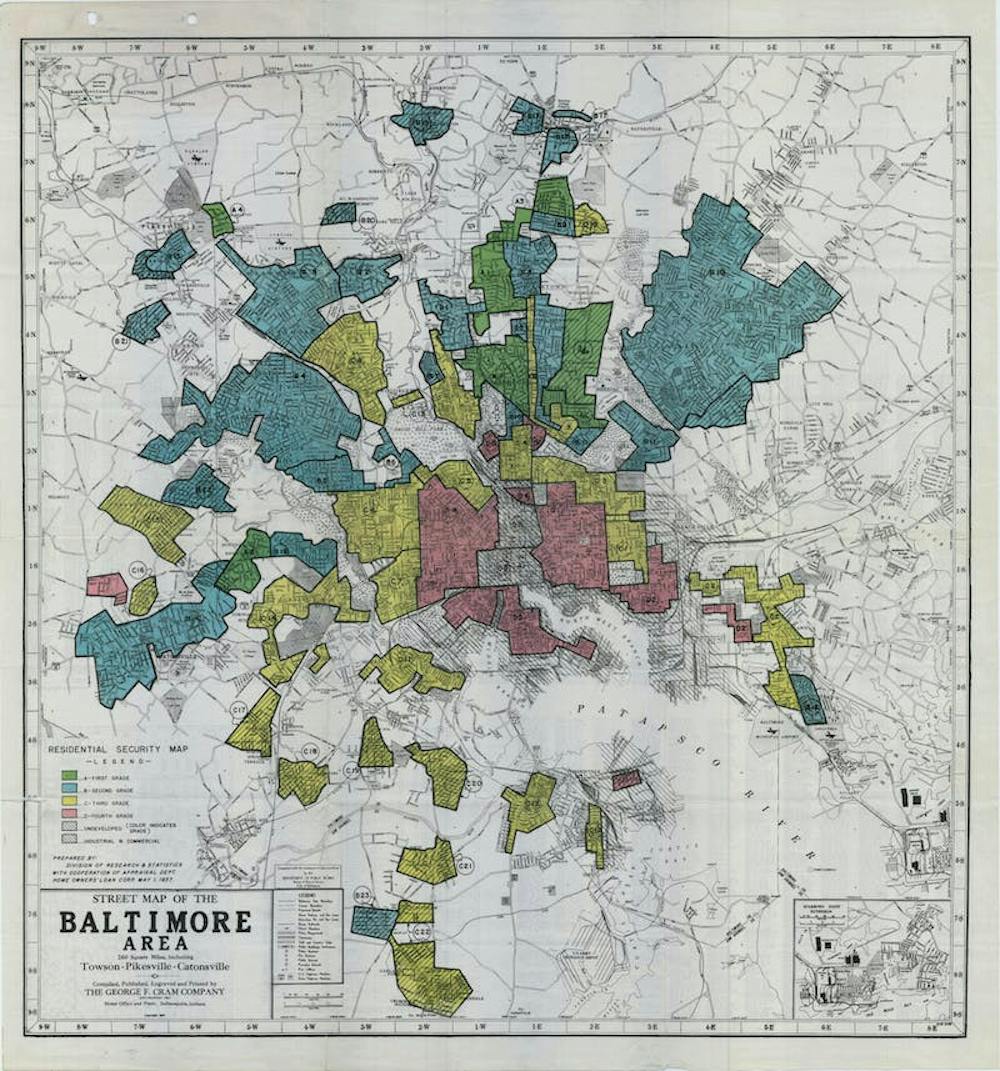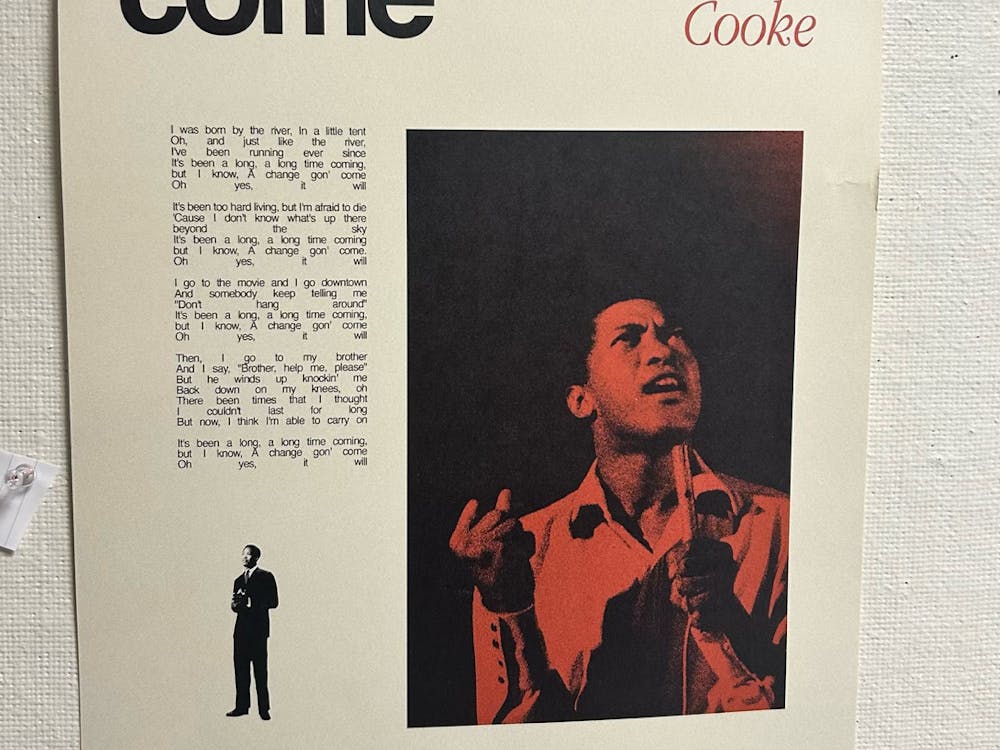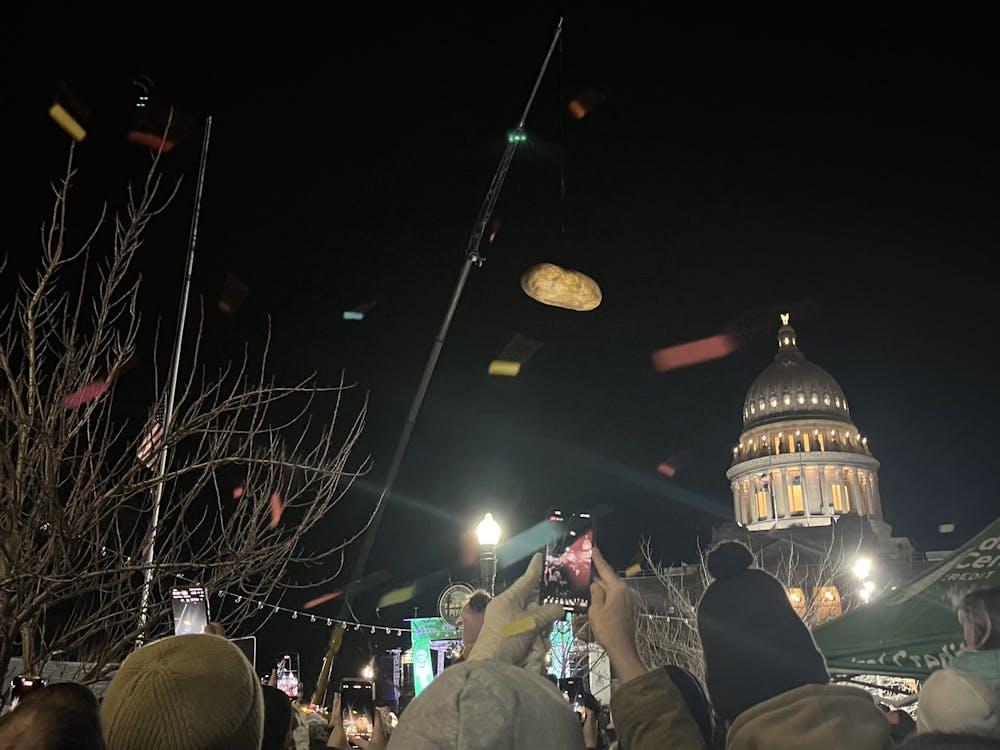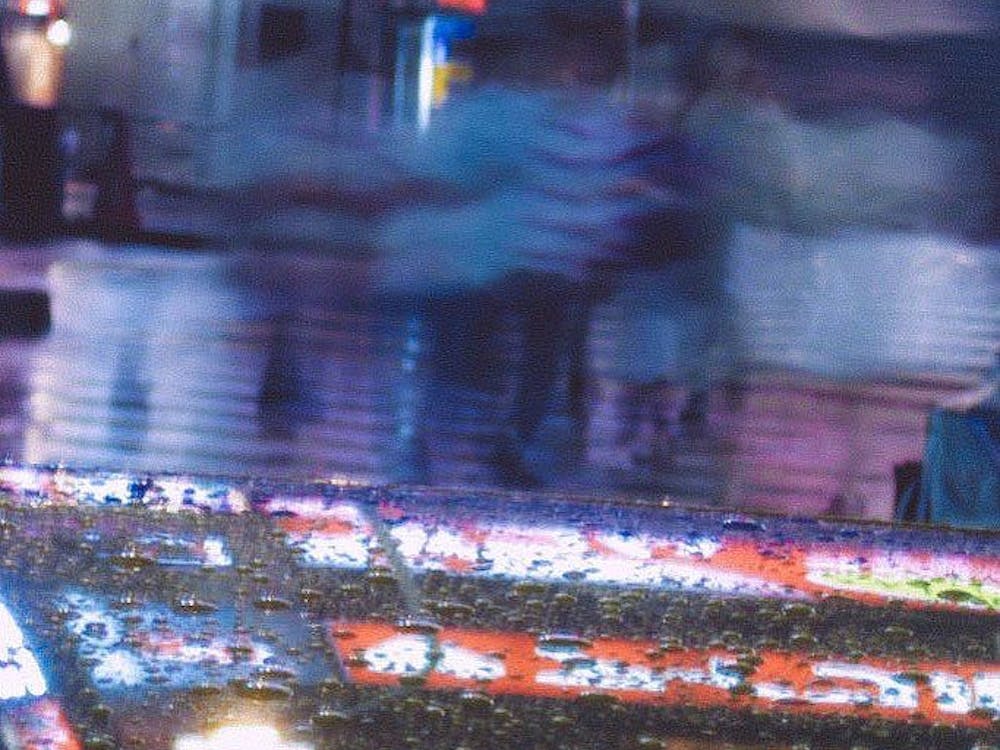Every year, new Blue Jays flock to the nest of Hopkins, eager to make it home for the next four years. However, it’s important for students to realize that this new home extends beyond campus and into Baltimore City.
Like any city, though rich in diversity and culture, Baltimore is riddled with issues that disproportionately impact various communities. As you enter an institution that has played an influential role in shaping the city’s history, educating yourself and becoming aware of the issues plaguing the city are the first steps to popping the infamous Hopkins bubble and making the most of your experience here.
Here is an overview of three major issues in Baltimore you should know about.
1. Redlining
In the field of public health, it is a common teaching that zip code is a better indicator of health outcome than genetic code. Redlining is a prime example of this in Baltimore.
Established in the 1930s by the Home Owners’ Loan Corporation, redlining is a practice in which investments and services are not granted to neighborhoods that are deemed as “dangerous” due to their residents’ ethnicity, race and/or socioeconomic status. This hinders minority groups and low-income individuals from becoming financially capable of moving, creating pockets of poverty, crime and pollution. These effects persist today, only exacerbating other public health issues.
A model of Baltimore called the White L vs the Black Butterfly, conceived by Assistant Professor at Morgan State University‘s School of Community Health and Policy Lawrence Brown, highlights the contrast between the L-shaped area occupied by affluent, majority-white residents and the butterfly-shaped region composed of communities living in poverty. Many of these low-income neighborhoods become deserts that lack the basic resources for a healthy and safe life, including nutritious foods, health resources, safe housing and green spaces.
As a result these communities are at a higher risk for many diseases, including COVID-19 and mental health illnesses, although they typically do not have the funds or resources to seek treatment. Now as residents of these neighborhoods endure cycles of financial distress and face an economic recession while still recovering from the effects of the pandemic, the disparities between the White L and Black Butterfly continue to worsen.
The issue of segregation has only been exacerbated by Baltimore City’s lack of public transportation, which further isolates those living in redlined areas. While the Red Line, a rail system proposed in the 1960s to connect East and West Baltimore, may have been a potential solution for this issue, Governor Larry Hogan canceled this project in 2015 and invested the funds into building suburban roads instead.
2. Public Violence
Among Hopkins students the string of reported carjackings has become a regular, almost comical, occurrence. But the consistency and closeness of these crimes to campus is a representation of the reality faced by the rest of the city.
Areas that lack economic investment from private and public sectors, notably those affected by redlining, have been found to have higher concentrations of crime. Limited housing and employment opportunities also contribute to the issue, since these risk factors further increase poverty and reduce social cohesion within communities. Marginalized groups that have been impacted by these various factors are most often at risk of encountering violence.
As a result higher instances of crime in Baltimore neighborhoods have been linked to negative health outcomes among their residents, particularly in mental health. These events also deter citizens from engaging in physical activity outdoors and strengthening community bonds, because public areas are viewed as unsafe.
Baltimore Mayor Brandon Scott announced a plan to invest in community-based programs to reduce violence, partnering with hospitals and organizations to support victims as well. Among its many initiatives to curb public violence, the Baltimore City Health Department’s Safe Streets program, which is modeled off of Chicago’s CeaseFire program, has proven to be effective in reducing nonfatal shootings.
3. Opioid Crisis
Declared as a public health emergency by the Health and Human Services in 2017, the opioid crisis is an epidemic that has led to devastating consequences nationally. Those addicted to opioids struggle to fulfill daily functions, such as maintaining a stable job, taking care of children and completing routine responsibilities. Without adequate support, it is even more challenging for those addicted to seek treatment and re-enter society. Unfortunately the opioid epidemic has only worsened alongside the COVID-19 pandemic. In May 2020, researchers observed a 57.7% increase in deaths caused by overdoses in the U.S. compared to May 2019.
Recently Baltimore has witnessed a drastic increase in the number of emergency hospital visits caused by opioids. With around 25,000 Baltimoreans addicted to opioids, Baltimore City had the highest percent increase in opioid-related deaths from 2020 to 2021 compared to other counties in Maryland. Low-income communities were at higher risk, since homelessness, untreated mental health issues and abuse are recognized risk factors of opioid misuse. Consequently areas that have been affected by redlining may be more susceptible to opioid misuse and overdose, and they remain isolated from treatment centers and access to life-saving medications that can make the difference between life and death.
Education and conversations about the opioid crisis are necessary to combat the stigma surrounding addiction. Accordingly Baltimore City has developed a plan to increase access to both rehabilitation programs and naloxone, the medication that reverses the effects of an opioid overdose, as well as to create various task forces to address the crisis.
This article barely scratches the surface of the various issues that continue to impact Baltimore, many of which are integrated within the city’s history. Make the effort to educate yourself, engage in community efforts and outreaches, speak with local government leaders and explore outside the Hopkins bubble. Like any home or place you care about, take action to make a difference as new residents of Baltimore.





